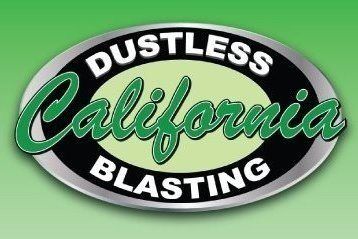
Dustless Blasting vs. Sandblasting: What’s the Difference?
When it comes to surface restoration and preparation, both dustless blasting and traditional sandblasting are highly effective methods. However, they each have distinct advantages and are suited for different applications. Whether you’re restoring an old car, stripping paint from a building, or removing rust from metal surfaces, choosing the right method is crucial for achieving the best results. In this blog, we’ll break down the key differences between dustless blasting and sandblasting to help you determine which option is best for your project.
What Is Sandblasting?
Sandblasting, also known as dry blasting, is a process that uses high-pressure air to propel abrasive materials—such as silica sand, glass beads, or aluminum oxide—at a surface to remove paint, rust, dirt, or coatings. This method is widely used for industrial and commercial applications, including metal cleaning, concrete resurfacing, and wood restoration. Sandblasting is highly effective for removing tough coatings and preparing surfaces for painting or refinishing. However, one of its major drawbacks is the large amount of dust it creates, which can pose health risks and require extensive cleanup.
What Is Dustless Blasting?
Dustless blasting is a more modern and environmentally friendly version of traditional sandblasting. This process combines water with abrasive materials, significantly reducing airborne dust and making it a safer option for workers and nearby areas. The addition of water helps suppress dust while also cooling the surface, preventing heat-related damage such as warping on thin metals. Dustless blasting is commonly used for vehicle restoration, graffiti removal, pool resurfacing, and delicate surfaces where traditional sandblasting might be too aggressive.
Key Differences Between Dustless Blasting and Sandblasting
- Dust Control – The biggest advantage of dustless blasting is its ability to suppress dust, making it ideal for use in residential and populated areas. Sandblasting, on the other hand, creates a significant amount of dust, requiring containment measures.
- Surface Protection – Since dustless blasting keeps surfaces cooler, it is a better choice for sensitive materials like fiberglass or thin metal, reducing the risk of warping. Sandblasting can generate heat, which may damage certain materials.
- Environmental Impact – Dustless blasting is considered more eco-friendly because it minimizes airborne contaminants and does not require as much containment. Traditional sandblasting can release harmful dust into the air, requiring additional safety precautions.
- Cleanup and Waste Management – Dustless blasting leaves behind less mess because the water keeps dust and debris contained. Sandblasting typically results in a larger amount of loose abrasive material, requiring more extensive cleanup.
- Efficiency and Cost – While dustless blasting often requires more specialized equipment and water supply, it can be more efficient in certain applications. Traditional sandblasting is generally faster and more cost-effective for large industrial jobs that require heavy-duty cleaning.
Which Method Should You Choose?
The best method depends on your specific project needs. If you’re working on a large industrial surface or need aggressive coating removal, traditional sandblasting may be the better choice. However, if you’re concerned about dust, environmental impact, or working on delicate materials, dustless blasting is a safer and more efficient alternative.
Both methods have their advantages, and a professional blasting service can help determine the best approach for your specific application. Whether you’re restoring an old vehicle, cleaning concrete, or preparing a surface for refinishing, understanding the difference between dustless blasting and sandblasting can help you make an informed decision for the best results.






